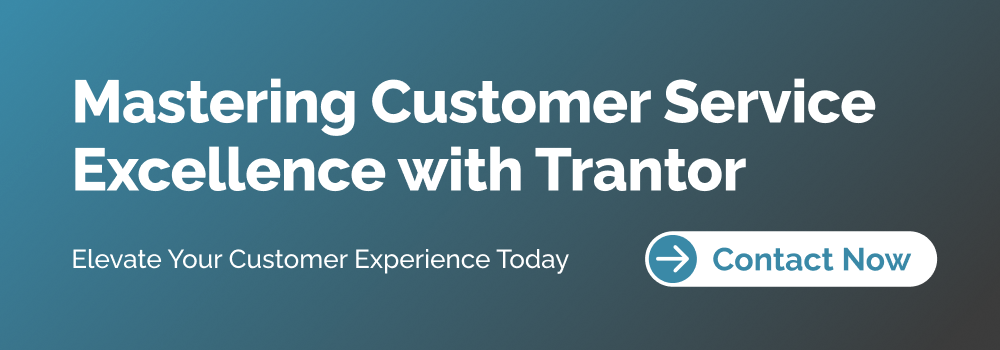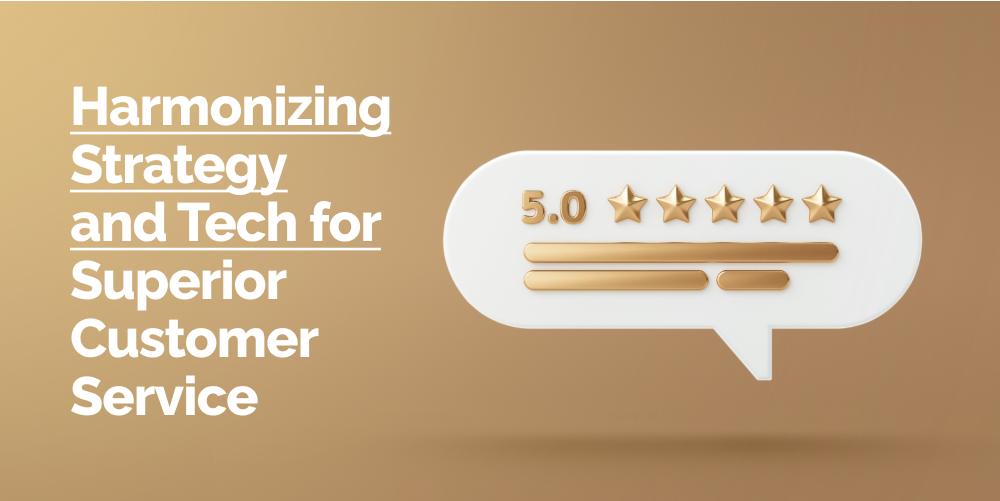CSaaS, zBlog
Aligning Strategy and Technology for Better Customer Service
Team Trantor | Updated: November 17, 2023
Introduction
Exceptional service is the cornerstone of brand success, and the impact of aligning strategy and technology on customer service cannot be overstated. In this competitive landscape, understanding the dynamics of aligning customer experience (CX) technology and strategy is essential to standing out.
The Cost of Subpar CX
A report by PwC highlights the high cost of subpar customer experiences. It states that 32% of customers would stop doing business with a brand they loved after just one bad experience. This aligns with the common knowledge that 68% of consumers say a bad experience causes them to switch brands, as mentioned earlier.
Real-Life Use Cases
Let’s explore some real-life use cases where aligning CX technology and strategy has made a substantial difference:
- Amazon: Personalization at Scale
Amazon, the e-commerce giant, is known for its personalized recommendations. They employ AI and machine learning to analyze customer behavior and provide product recommendations, resulting in a 29% increase in sales, according to a case study by McKinsey & Company. This personalization strategy is a clear alignment of technology and business strategy. - Starbucks: Mobile Ordering
Starbucks, in its pursuit of a seamless customer experience, introduced mobile ordering and payment options. This not only reduced customer wait times but also led to a 10% increase in customer spending, as reported by Deloitte. - Zappos: Exceptional Customer Support
Zappos is renowned for its exceptional customer support. By aligning its customer-centric strategy with technologies like live chat and chatbots, they achieved a 75% increase in customer satisfaction, according to a report by IBM.
Omnichannel Customer Data

In today’s digital age, delivering exceptional service requires a comprehensive understanding of your customers across various channels. According to a report by Gartner, companies that implement personalization across all customer journeys can expect an 18% increase in revenue.
- Hilton: Seamless Booking Experience
Hilton Hotels leverages a CRM system to provide a unified view of customer data. This enables them to offer a seamless booking experience across all their channels, resulting in a 15% increase in online bookings, as reported by Salesforce. - Sephora: Personalized Beauty Recommendations
Sephora’s use of a Customer Data Platform (CDP) allows them to create unified customer profiles. This, in turn, powers their personalized beauty recommendations. Sephora reported a 20% increase in online sales due to this technology alignment, according to a case study by Adobe.
Proactive Customer Monitoring

Being proactive in addressing customer needs is a hallmark of exceptional service. A report by Harvard Business Review suggests that companies that employ proactive service strategies can reduce their churn rate by 3% and increase revenue by 4%.
- Delta Airlines: Predictive Maintenance
Delta Airlines utilizes predictive models and automated alerting to monitor the health of its aircraft fleet. By detecting maintenance issues before they cause delays or cancellations, Delta has reduced the number of flight disruptions by 40%, as detailed in a report by CNBC. - American Express: Fraud Prevention
American Express uses predictive models to detect potential fraudulent transactions. Their proactive approach has led to a 35% reduction in fraudulent activities, as stated in a case study by Experian.
Continuous Improvement Culture

Creating a culture of continuous improvement is vital for sustained success. According to a report by McKinsey & Company, organizations with a culture of continuous improvement are 1.4 times more likely to outperform their peers.
- Toyota: Kaizen Philosophy
Toyota is a prime example of a company with a continuous improvement culture. They have embraced the Kaizen philosophy, which focuses on small, incremental improvements. This has allowed them to maintain a reputation for high-quality vehicles and efficient manufacturing processes. - Apple: Employee Empowerment
Apple empowers its employees to make judgment calls to resolve customer issues. This has led to high levels of customer satisfaction, with 90% of Apple customers reporting a positive experience, as detailed in a report by CustomerGauge.
The Path to CX Excellence
In conclusion, aligning your business strategy with the right CX technologies is a proven path to excellence in customer service. Real-life use cases from companies like Amazon, Starbucks, Zappos, Hilton, Sephora, Delta Airlines, American Express, Toyota, and Apple demonstrate the tangible benefits of this alignment. Industry reports and data points emphasize the high costs of subpar customer experiences and the potential for increased revenue and customer satisfaction through strategic technology adoption.
In this competitive landscape, understanding the dynamics of aligning customer experience (CX) technology and strategy is essential to standing out. The impact of aligning strategy and technology on customer service cannot be overstated.
Remember, the key to customer success is not letting tools drive your strategy. Instead, let your strategy drive the choice of tools. Align your technology investments with your customer service vision, and you’ll undoubtedly see the benefits in terms of customer loyalty and business success.





